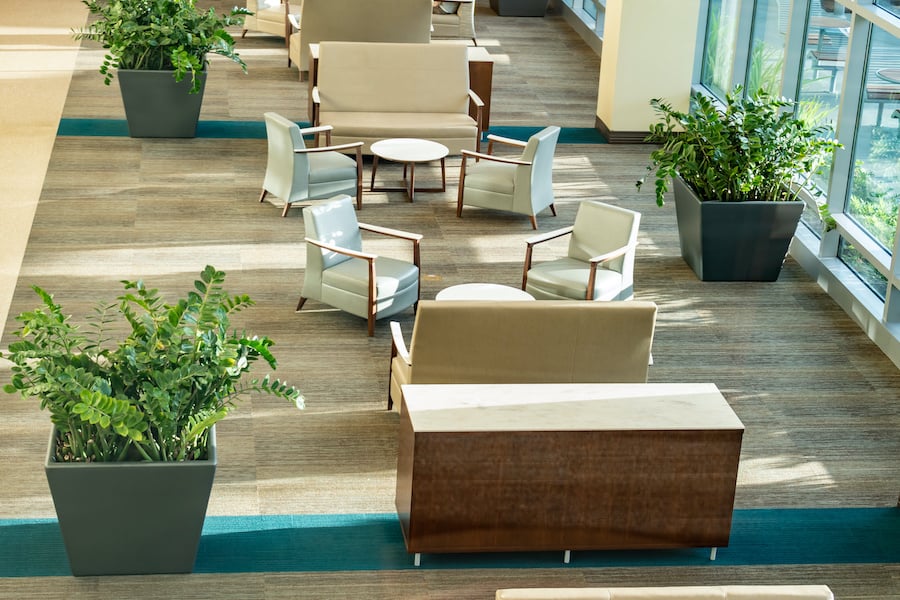
Guest blog by Bailey Belmont. Bailey is a Content Manager at HandmadeWriting. She is a regular sites and blogs contributor. A true coffee imbiber she loves sharing her ideas on Design and Home Improvements. Bailey loves spending her time with family or going camping.
Office workers often face the absence of motivation to work which, as a result, leads to a low performance indicator. Sometimes even a favorite job can bore the most hard-working person. No wonder it happens though, because you come to the office five times a week and spend hours working at the desk, and that can go on for many years. If any details of your workspace design annoy you and make you feel uncomfortable, the productivity of work decreases significantly.
Any business owner knows that a company’s success depends on human capital. The more comfortable employees feel in the workspace, the more they’re eager to do their job well. That’s why ergonomics has become the subject of close study, and employers have started to pay attention to their office design.
Benefits of Ergonomic Planning
Office ergonomics is a very complicated science that requires a lot of finances and knowledge from the office owner, but no company has yet regretted its implementation.
We have already mentioned that ergonomic planning increases productivity. However, it’s not the only advantage for workers and employers. Here are the main reasons why you should try to plan your environment in the most comfortable way possible:
-
It saves workers from injuries. Even the fact that people work not physically but mentally doesn’t prevent them from serious injuries and diseases. Office workers know firsthand about musculoskeletal disorders, back and neck pain, vision problems, etc.
-
It’s a good money investment. You can save a lot of money because you won’t need to spend it on various medical compensations and insurance.
-
Workers will respect you more than ever. It’ll show them that their employer treats them as living people with their own needs. As a result, the percentage of voluntary lay-offs will drop down.
The Most Effective Strategies for Ergonomic Planning of the Office Space
You have free rein in choosing the layout, arrangement of workplaces, etc. Do it according to your company’s purposes and desires of workers. What’s important is that everyone should have enough space and feel comfortable. It’s better to convene a meeting of all personnel, discuss future changes, and ask about the individual needs of every worker. Based on the collected information, you should create a plan. Proper ergonomic redevelopment should deal with the following components of the working environment:
-
The right colors of walls. Grey, pastel and unsaturated colors make people feel depressed and uncomfortable. Experts recommend choosing bright and vivid, but not acid colors. Find a balance, ask workers for advice. For example, different shades of green colors improve productivity, blue enhances creative thinking. Choose different combinations to create a comfortable environment and stimulate people to work better.
-
The lightning. It has a huge psychological influence on people and the quality of their work. It’s better to use natural light as much as possible. It reduces stress and the eyes of your employees won’t get tired. It’s also great to use fluorescent lamps but you should try to find the light close to the natural one. Do your best to provide each worker with an individual lamp, so that everyone can configure illumination according to their own needs and purposes.
-
The furniture. Most physical disorders arise from inappropriate furniture set according to one standard. This standard doesn't take into account that all people have different height and physique. By the way, the ordinary office workers spend more than half of the day at the desk. Long static posture leads to serious problems with muscles, bones, and joints. Buying adjustable desks and chairs is a lot cheaper than purchasing them on individual orders. Modern desks let people easily change their position from sitting to standing, which helps to avoid many serious health problems.
-
The position of mouse and keyboard. The worker shouldn’t make a lot of extra movements to access the information using the keyboard or mouse. When it’s necessary to lean or put the elbows and wrists in an uncomfortable position, it’s a sign that something is wrong with ergonomics here. The best option is when the elbows are at the right angle. Adjustable furniture is the best way out in such a situation.
-
The background sound. The noise in offices is a very underestimated problem. The keyboard clicking, conversations, and other sounds distract people from work, especially in open spaces, not to mention the sounds from the outside. They’re created to improve connection and collaboration, but working in silence is a lot more effective. Give each worker a pair of noise-muting headphones and put calm background music that won’t distract them from achieving the company’s goal.
-
The temperature regime. People working at the office usually sit 60-70% of their working day and as a result, often feel cold. That’s why the temperature at the office shouldn’t be lower than 20° Celsius to prevent colleagues from catching cold or flu. If the average temperature is lower, the workers will surely lose concentration and get sick.
Ergonomic planning has become an important aspect of any business lately. Everyone can agree that the company’s results depend on workers’ performance, and their success, in turn, depends on the working environment. That’s why the employer aims to make the office comfortable and suitable for every colleague. It’s not as difficult as it seems, and as a result of your effort, employees will come to work in the right spirit ready to make your business thrive.
Here are a few other articles we think you'll enjoy:
Checklist When Touring Office Space
How Cloud-Based AI Will Help Transform CRE
6 Tips to Avoid Leasing the Wrong Office Space
Subscribe to our blog for more CRE tips!!








